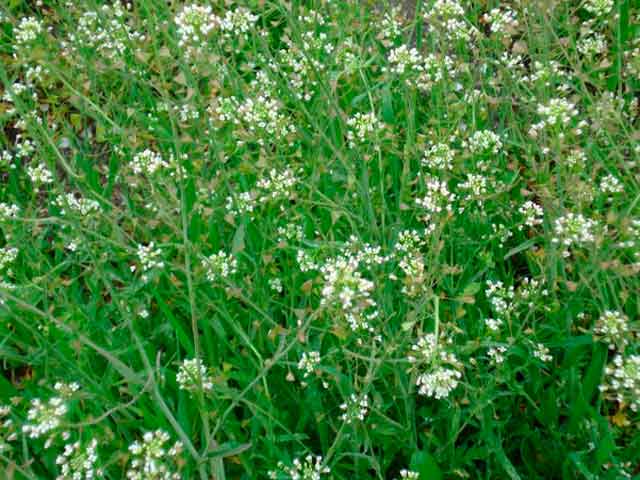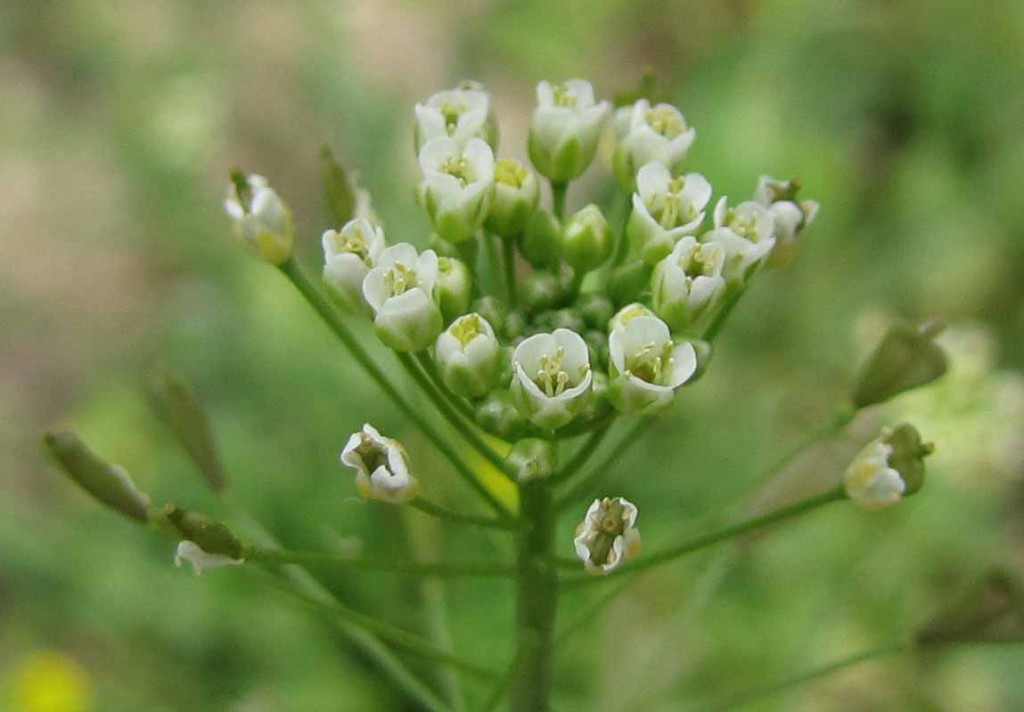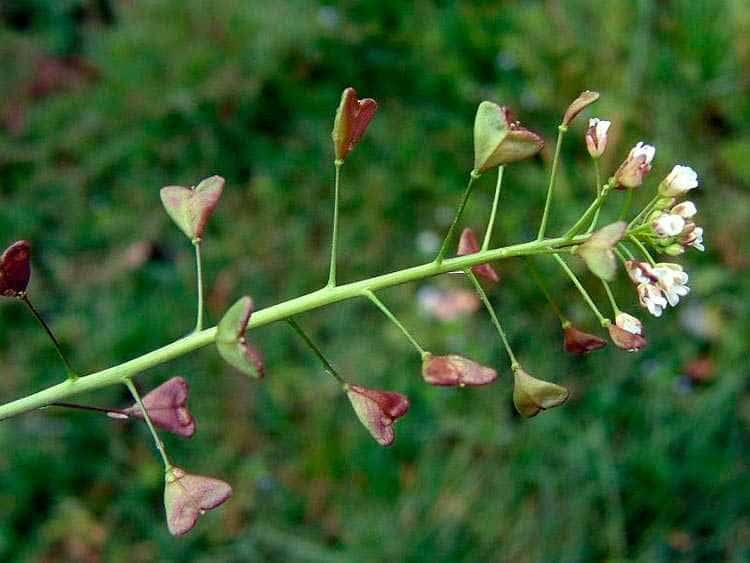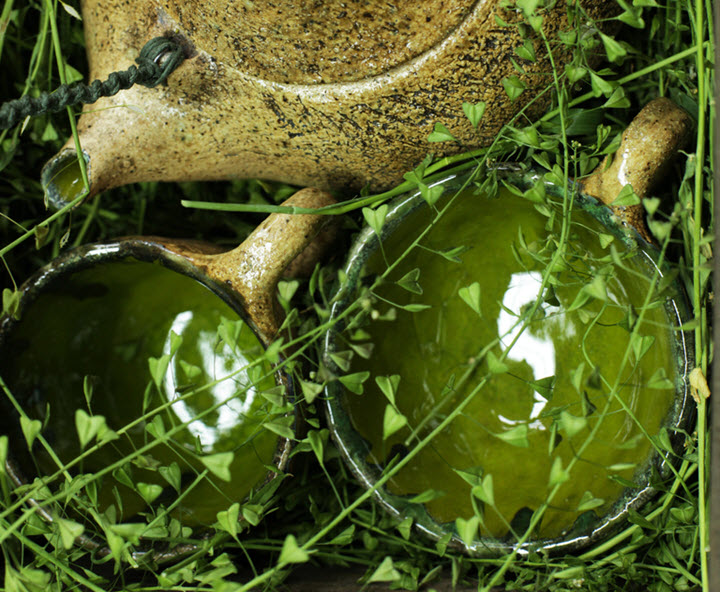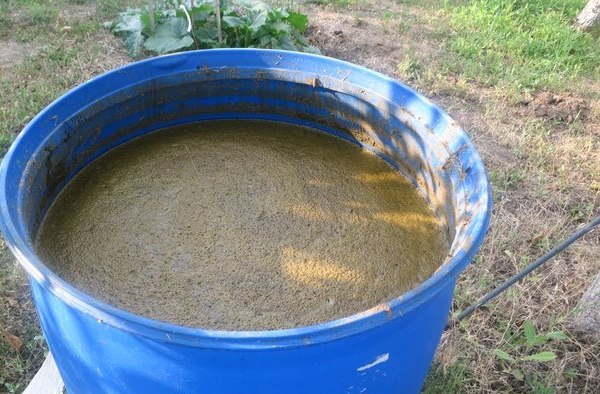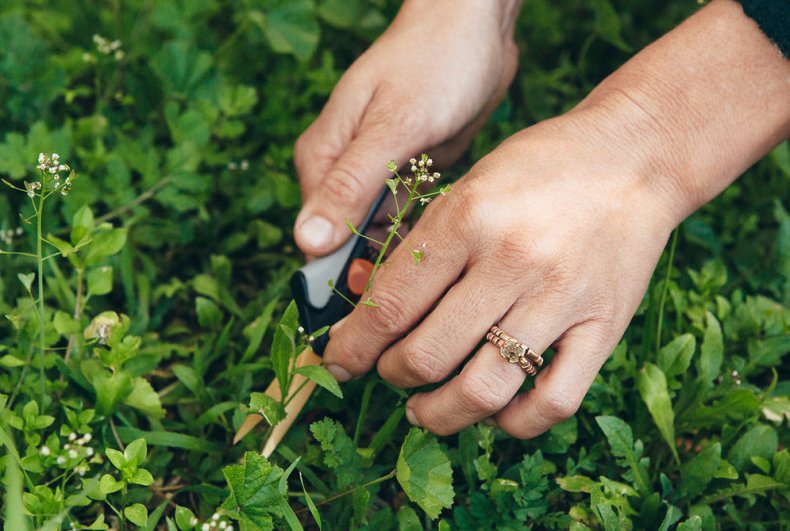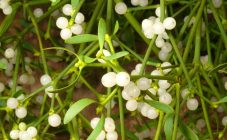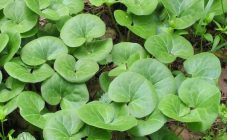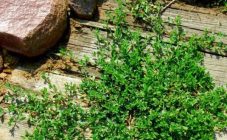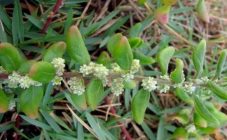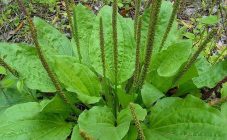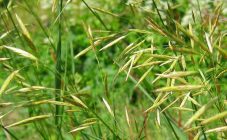Content:
Under the well-known name shepherd's purse, ordinary grass hides the simplest plant belonging to crops from the Cabbage family. Its Latin name is rather complicated, it looks like "Capsella bursa-pastoris".
Description of culture
This type of medicinal herbs has other names, among which the following are especially common: seriki, as well as rezhuha or totkun. In appearance, it differs from other varieties of this family with its thin, spindle-shaped rhizome.
The stems of this plant, under normal development, may appear erect with extensive branching. They mostly do not have leaves, only in the lowest part of them can sparse hairs be observed.
The leaves growing on the branches have a look similar to petiole plants; in composition, they belong to pinnately separate cultures, consisting of toothed lobes of the correct shape. Such leaves can be classified as alternate and apical with a triangular geometry (slightly elongated) and a pointed arrow-shaped base.
The tetrahedral flowers of the shepherd herb are completely white, and when blooming, they gather in attractive umbrella clusters. In this case, the normal length of the petals is about 35 mm, the sepals under them are about 25 mm. The flowering period of the plant lasts from April to the end of August.
The fruits of this herbaceous culture look like an elongated and slightly flattened pod on the sides, about 8 mm in size. This crop bears fruit throughout the season (May to September) and is distinguished by a large amount of seed.
Shepherd grass grows mainly in areas with a temperate and fairly hot climate. On the territory of the Russian Federation, this plant is found everywhere (the only exception is the northern regions).
Reproduction methods
The herbaceous plant of the "Shepherd's bag" variety has several subspecies under the general name "capsella" (its varieties can have a wide variety of names). All of them are combined into a group that has one common property, namely, that medicinal infusions can be made from them.
The medicinal herb usually “lives” in field and steppe conditions, and can also grow on roadsides and in city dumps. Very often, this type of grass is found near the cultivation of grain crops.
This variety of wild herbs reproduces naturally (by sowing seeds and their subsequent germination). If you wish, you can purposefully engage in breeding a shepherd's purse in your area.
For this, pre-collected seeds are sown in the form of seedlings (some specialists manage to sow them directly into the ground). The best time for planting is early spring. With its arrival, small seeds are mixed with sand, then sown into the soil, which is best to choose loam with the addition of lime. This technique allows you to evenly distribute the seeds over the site, which will ensure the convenience of caring for the sprouts (thinning them, in particular).
Beneficial features
The most important area where it is possible to use a shepherd's purse is practical and traditional medicine.The main method of application is the preparation of decoctions and infusions from herbs, which differ in medicinal properties.
For these purposes, all aerial parts of the shepherd's purse of grass are used, with which the procedure for collecting stems, growing leaves and inflorescences is associated. The medicinal properties of this plant, which ensure its use as a medicine, are explained by its rich chemical composition. It contains:
- Special tanning components.
- Phytoncides.
- The beneficial substance is choline.
The former are distinguished by excellent astringent and anti-inflammatory properties, the latter have a pronounced antibacterial effect. In turn, choline helps to lower cholesterol levels in human blood.
The preparations prepared on the basis of this herbaceous plant can also be used as therapeutic agents for lesions of the intestinal tract. To this should be added the diuretic and analgesic properties of the herb, which can help with prostatitis and cystitis.
For the preparation of medicinal tinctures and decoctions, two tablespoons of well-dried raw materials are taken from the top, which is then poured into a glass of well-boiled water. The mixture obtained after this is infused for about half an hour.
In addition to the field of use discussed, fresh grass sprouts are widely used in cooking. For these purposes, young shoots of a plant planted in summer are usually used. To its taste, it somewhat resembles cabbage, which allows it to be used in the preparation of a wide variety of vegetable salads. Experienced chefs have adapted to frying the rosettes of herbs in oil, having previously dipped them in an egg and rolled them in flour.
Disembarkation, care and illness
According to experienced gardeners and gardeners, the soil intended for planting grasses should correspond to the rate of moisture and nutritional value suitable for a number of vegetable crops (cabbage, for example). For planting procedures, a time is selected when the snow in the beds has already melted, and a sufficient amount of moisture has accumulated in the soil.
Feeding of this variety of herbaceous crops is organized only once during the entire growing season. It is carried out during flowering using complex mineral fertilizers. Watering of herbs is organized only in very dry weather (it is advisable to avoid waterlogging of the soil during their growth), they do not need weeding at all.
Sheep's purse is susceptible to common diseases such as powdery mildew or cruciferous flea. To combat them, it is recommended to use well-known folk remedies, such as, for example, solutions of soda ash, mullein, or an infusion of wood ash.
Collection and storage procedure
The instruction for the use of the herb prescribes to harvest it during the period of active flowering, but before the seeds ripen. When harvested, the plant is cut with a cutter at a height of about 10 cm from the ground level.
For drying, the prepared raw materials are spread in a thin even layer on a sheet of paper or on a piece of dry cloth, then left in a warm and well-ventilated place.
The finished dry medicinal composition is placed in small portions in tissue bags and stored for 3 years.
Decoctions prepared according to the instructions have only one medication contraindication. It lies in the fact that it is not recommended to give them to young children (that is, under 12 years of age).
